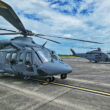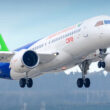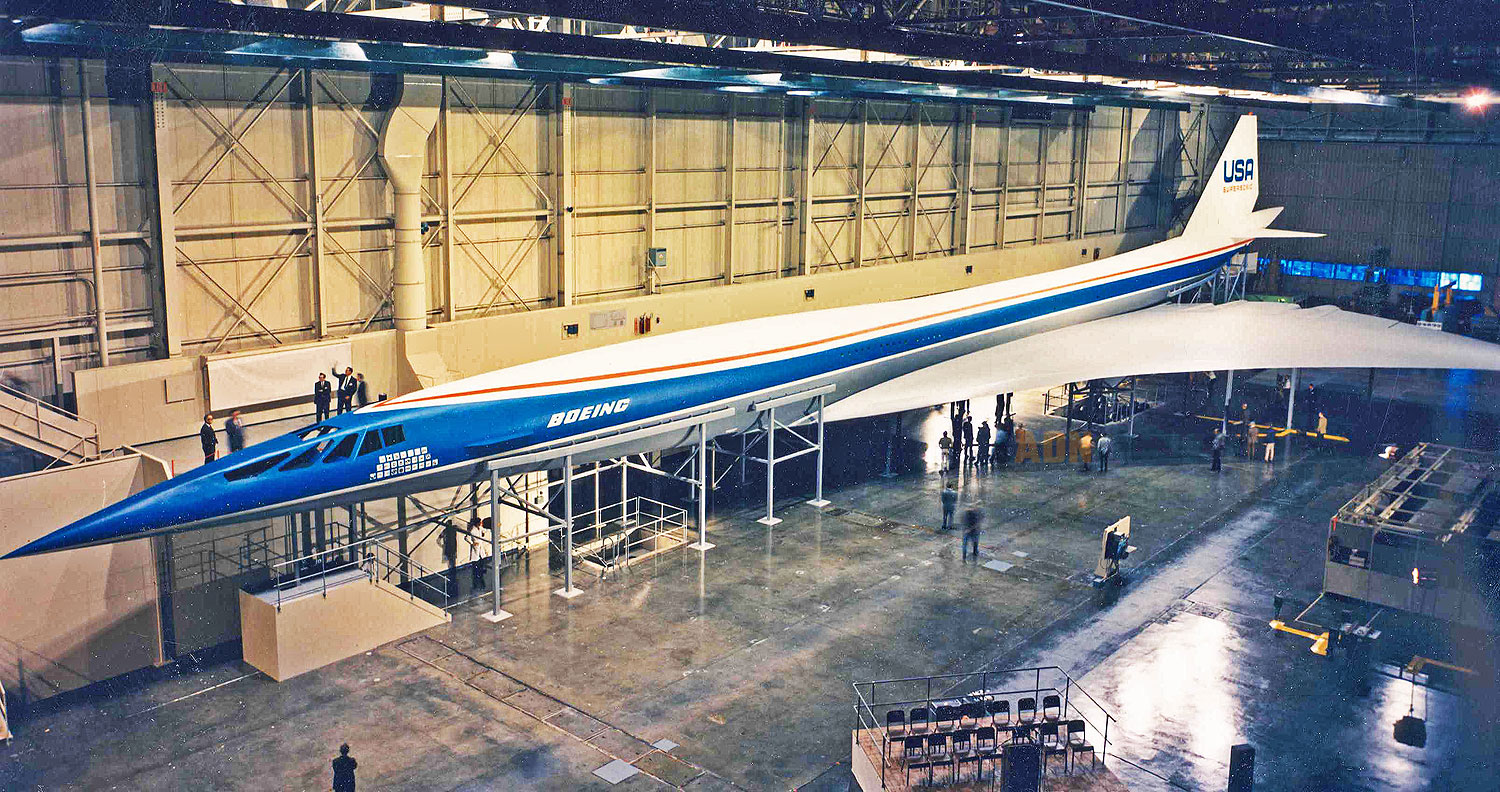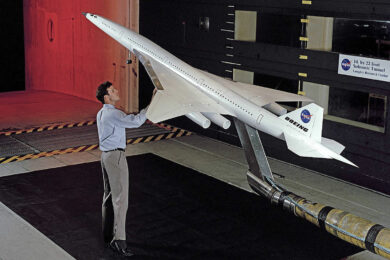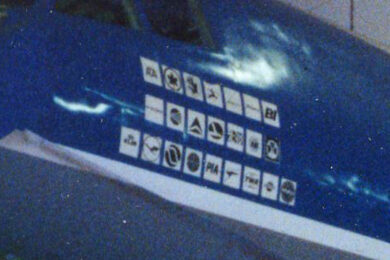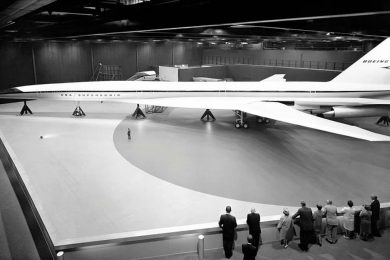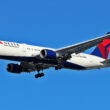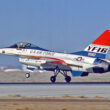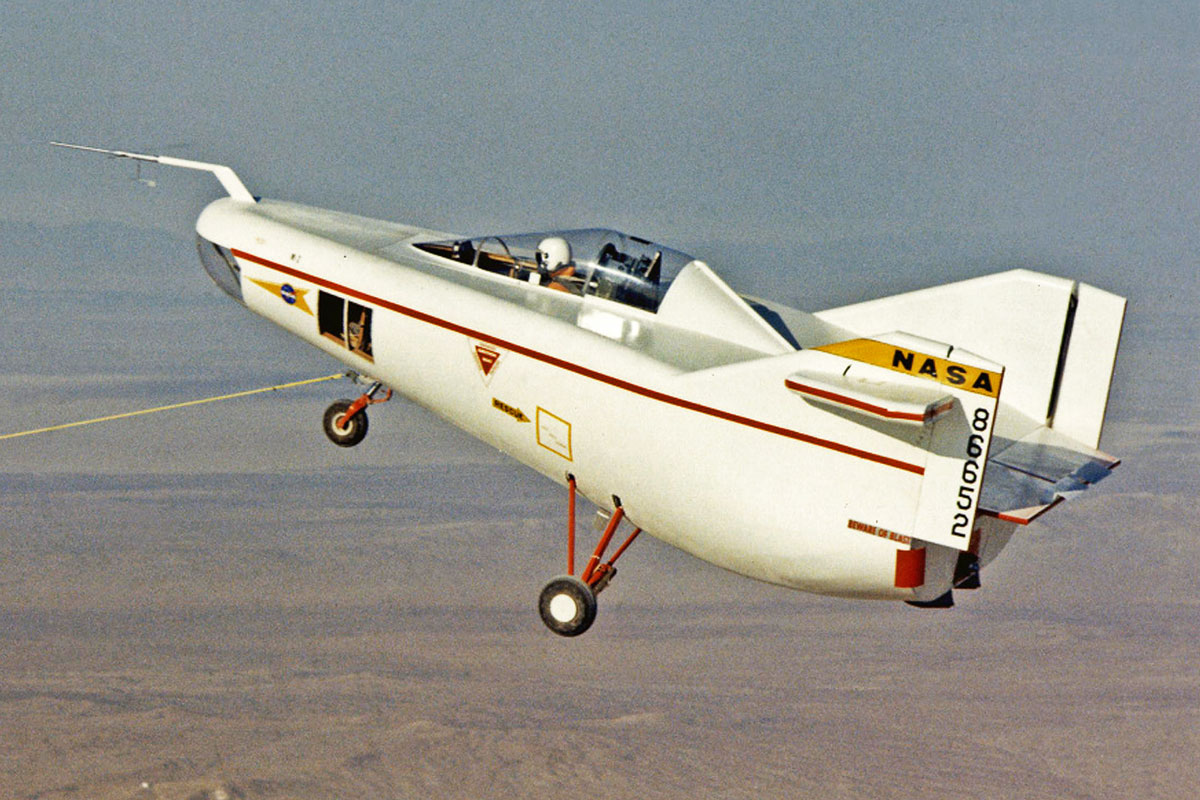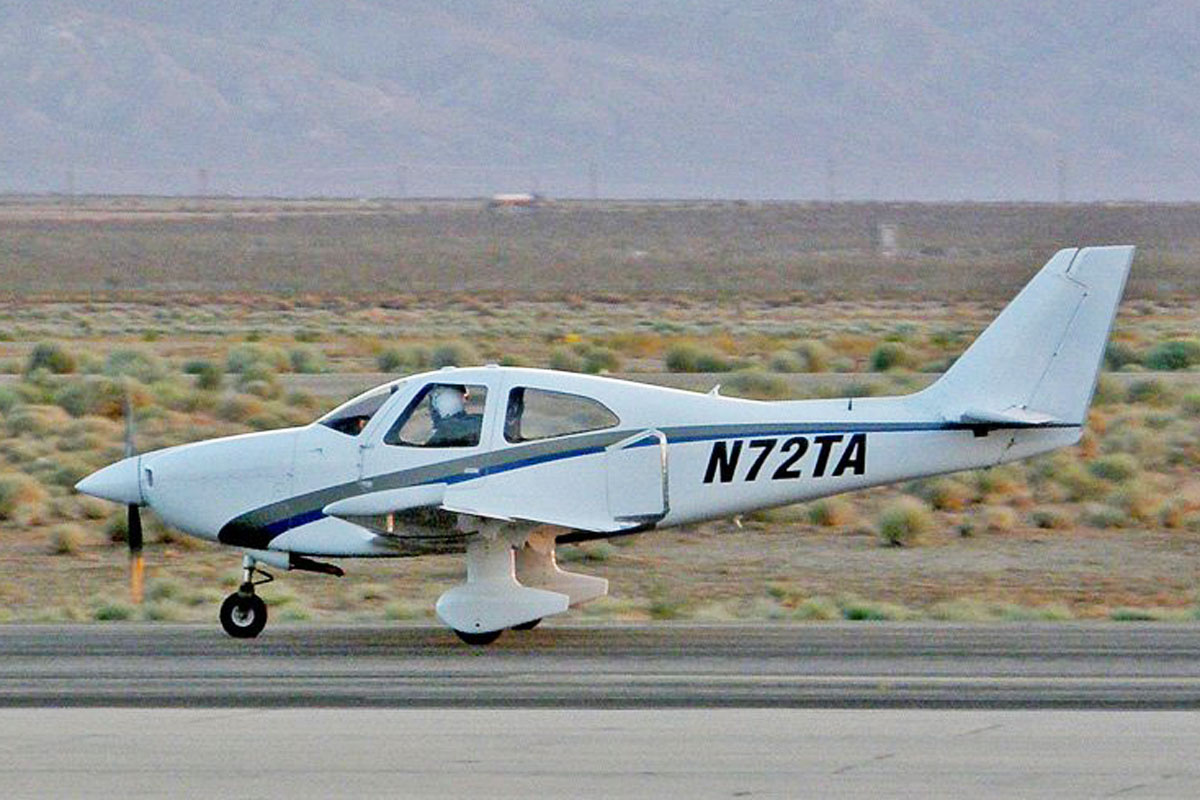A few days ago, NASA and Lockheed Martin presented the X-59, a technology demonstration aircraft that aims to enable supersonic passenger jets in the coming years.
What few know is that the United States was already committed to launching an aircraft faster than sound at the same time that the Europeans and Russians were developing the Concorde and the Tupolev Tu-144.
It was the end of the 1950s and it was considered that commercial supersonic flight would be a reality in a short time. In the USA, North American and Lockheed started thinking about the idea, but Boeing went the furthest with the 2707 project.
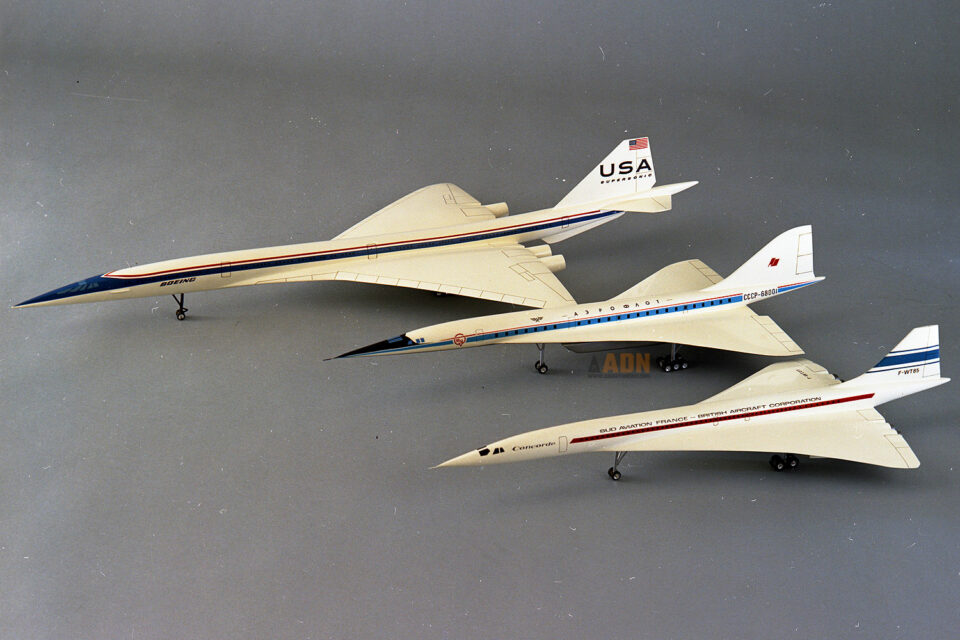
The ambitious project, initiated through a government contract in 1966, aimed to revolutionize air travel with a colossal aircraft capable of soaring at speeds exceeding Mach 2.
Swept-swing
Initially, the Boeing 2707 boasted a distinctive design, featuring a delta wing and canard surfaces, setting it apart from its European counterpart.
One of the alternatives, however, provided for swept-wing capability, allowing for a dynamic shift in wing configuration during different phases of flight. The four engines would be installed at the bottom of the tail and horizontal stabilizers.
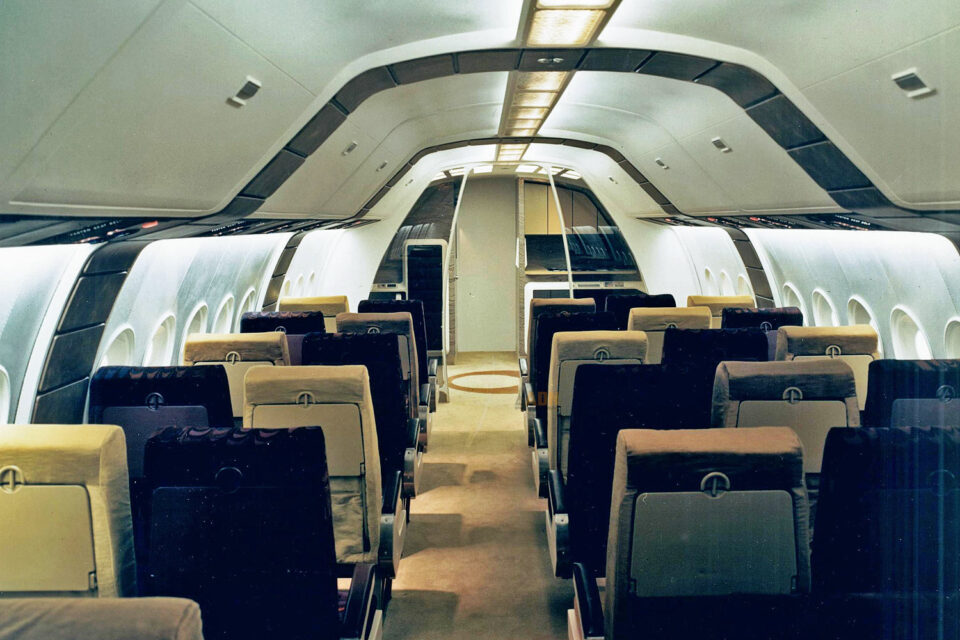
At the heart of the project was the promise of accommodating around 250 passengers, surpassing the Concorde in size and passenger capacity. This larger-than-life vision was conceived to make the Boeing 2707 economically competitive, offering a higher passenger yield and potential profitability.
However, the journey to supersonic success was fraught with technical tribulations. Tackling the intense heat generated by air friction at high speeds, mitigating the disruptive effects of sonic booms, and engineering efficient engines proved to be formidable challenges. As costs skyrocketed and delays mounted, the project encountered turbulence on its trajectory to completion.
Environmental concerns added further turbulence to the Boeing 2707’s flight path. Fears surrounding the environmental impact of supersonic flights, including sonic booms and high-altitude emissions, cast a shadow over the project’s viability.
Cost of US$ 1 billion
In a dramatic turn of events, the U.S. government pulled the plug on the Boeing 2707 program in March 1971. Rising costs, technical hurdles, and shifting economic winds led to the abrupt cancellation of the supersonic dream.
Not before the enormous sum of US$ 1 billion had been consumed in values at the time, an amount paid for by taxpayers.
Follow ADN: Instagram | Twitter | Facebook
The decision marked the end of America’s pursuit of a supersonic transport at that time and redirected Boeing’s focus towards more conventional subsonic commercial aircraft, notably the iconic Boeing 747.
While the Boeing 2707 never graced the skies, its legacy endures as a testament to the challenges of reaching new heights in aviation. The Concorde, on the other hand, continued its supersonic journeys until its retirement in 2003, leaving behind a sonic boom in the annals of aviation history.
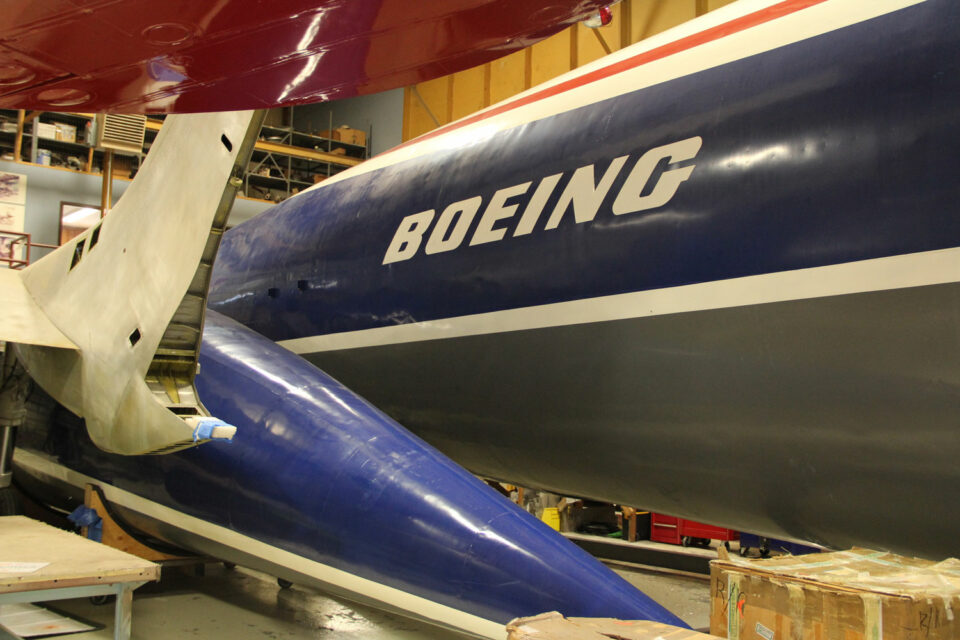
Some facts about the Boeing 2707
Design
– Distinctive delta wing configuration.
– Canard surfaces (small wings located near the nose).
– Planned swing-wing capability for variable wing sweep during different phases of flight
Size and Capacity
– Intended to be larger than the Concorde.
– Designed to accommodate approximately 250 passengers.
– Larger size aimed to provide a higher passenger capacity for improved economic viability.
Speed
– Capable of flying at speeds exceeding Mach 2.
– Supersonic speeds intended to significantly reduce travel time between destinations.
Technical Features
– Innovative engineering to address challenges associated with high temperatures generated by air friction at supersonic speeds.
– Advanced propulsion systems to achieve and sustain supersonic flight.
Key events
1966: Project Initiation
– Boeing wins a government contract to develop a supersonic transport (SST), leading to the inception of the Boeing 2707 project.
Late 1960s: Design and Development
– Boeing works on the design of the Boeing 2707, incorporating features such as a delta wing, canard surfaces, and swing-wing capability.
– Technical challenges and complexities in developing a supersonic aircraft emerge.
March 1971: Project Cancellation
– The U.S. government officially cancels the Boeing 2707 program in March 1971.
– Reasons for cancellation include rising costs, technical difficulties, and changing economic conditions.

